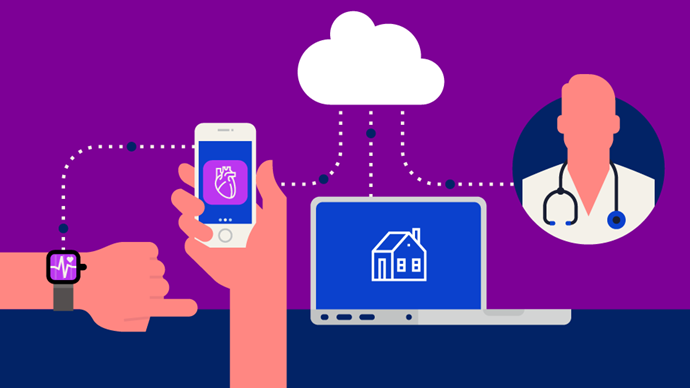The Rise of Teletherapy : Why People are Choosing Distance Counseling
In recent years, teletherapy has surged in popularity, reshaping how couples counseling services are delivered. This trend has been accelerated by the COVID-19 pandemic, but its roots go deeper, touching on fundamental shifts in how people seek and receive care. I wanted to write this to explore why people prefer teletherapy, focusing on its convenience, accessibility, comfort, and the technological tools that make it all possible.
The main reasons for the popularity of teletherapy is the convenience factor.
Teletherapy offers unprecedented convenience for individuals and couples seeking mental health support. Unlike traditional therapy, which requires travel to a specific location, teletherapy allows sessions to be conducted from the comfort of your own home. This flexibility means fewer logistical hurdles for clients, making it easier to fit therapy into a busy schedule.
Consider the case of one of my current clients, a working mother of two, who struggled to find time for her therapy sessions. With teletherapy, she can now attend her appointments during her lunch break without worrying about commuting. This ease of access has made a significant difference in her ability to maintain consistent therapy sessions.

Teletherapy for Couples Counseling or EMDR is becoming more common
For couples, teletherapy can also be a game-changer. Coordinating schedules can be challenging, but virtual sessions mean that partners can join from separate locations if needed. This flexibility is particularly beneficial for couples in long-distance relationships or those with conflicting work hours.
Teletherapy breaks down the barriers of travel and care that have traditionally limited access to mental health or relationship discussions. For individuals living in rural or underserved areas, finding a qualified therapist nearby can be nearly impossible. Teletherapy eliminates this issue by connecting clients with therapists regardless of geographical location.
Comfort and Privacy leads to better communications
One of the most compelling reasons people prefer teletherapy is the comfort and privacy it offers. Traditional therapy settings can sometimes feel intimidating, especially for those new to mental health care. Teletherapy allows clients to engage in sessions from a familiar and comfortable environment, reducing anxiety and promoting openness.
Privacy is another significant advantage. Teletherapy platforms use secure, encrypted connections to ensure confidentiality, giving clients peace of mind that their personal information is protected. This level of security can be especially reassuring for individuals concerned about the stigma associated with seeking mental health care.
I use a service called Remote EMDR, which brings together a HIPAA-compliant video chat with therapist-controlled bilateral stimuli, creating an invaluable resource for online teletherapy. You can find out more on my teletherapy service page (here)
Imagine John, who has always been wary of visiting a therapist’s office due to fear of being seen by someone he knows. With teletherapy, he can have his sessions discreetly from home, eliminating this concern and allowing him to focus entirely on his conversations with a therapist.

Other Blogs
Services Offered
Overcoming the technology challenges can help you receive better support solutions
While teletherapy offers numerous benefits, it is not without its challenges. One of the primary concerns is technological barriers. Not everyone has access to high-speed internet or the necessary devices to participate in virtual sessions. This digital divide can limit the reach of teletherapy and can be supported by new technology.
Although teletherapy platforms use encryption to protect client information, some individuals may still feel uneasy about discussing personal matters online. Building trust in these platforms is essential to overcoming this hurdle. That is why I use the remotEMDR platform. RemotEMDR is the world’s leading platform for online therapy. It offers therapists the ability to operate various bilateral stimulation (BLS) during the therapy session, including visual stimulus, auditory stimulus, and sensory stimulus.
Another device we can discuss is Bi-Tapp – A patented wearable device that taps for you, regulating your nervous system in real-time, creating a steady state of calm and focus. When the nervous system is regulated, we feel safe, calm, and focused. But when it gets triggered, we enter survival mode and experience fight, flight, or freeze responses. Anxiety and panic mount. Everything feels overwhelming. We can’t think straight, can’t cope, and can’t sleep. Life feels impossible. Bi-Tapp can help. It does the tapping and regulates your nervous system for you.
The potential for teletherapy to transform the mental health landscape is immense. By continuing to address challenges and leverage technological advancements, we can create a future where high-quality mental health care is within reach for everyone.
Placer Therapy does offers Teletherapy services
Teletherapy offers a myriad of benefits, making it an attractive option for individuals, couples, and mental health advocates. Its convenience, accessibility, comfort, and the technological tools that support it provide a compelling alternative to traditional therapy. While there are challenges to overcome, the future of teletherapy looks bright, with the potential to revolutionize mental health care.
If you’re considering teletherapy, now is the perfect time to explore this innovative approach. Whether you’re seeking support for yourself or a loved one, teletherapy offers a viable and valuable option :
Learn more about me (HERE)
Or you can contact me (HERE)
I’m passionate about bringing harmony, peace, and joy back to couples
Many people struggle with feeling out of alignment with themselves

Going to counseling can strengthen, or even save, your relationship. I urge people not to wait


